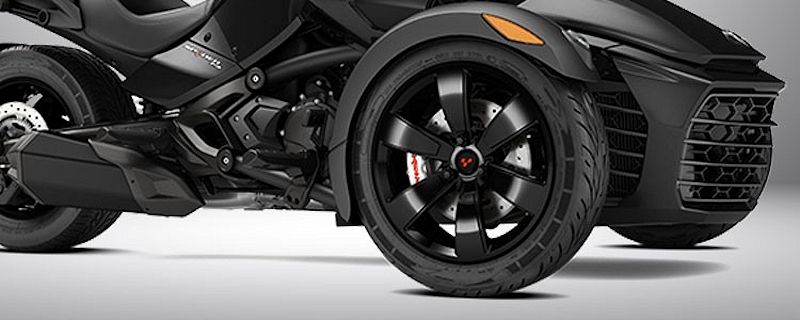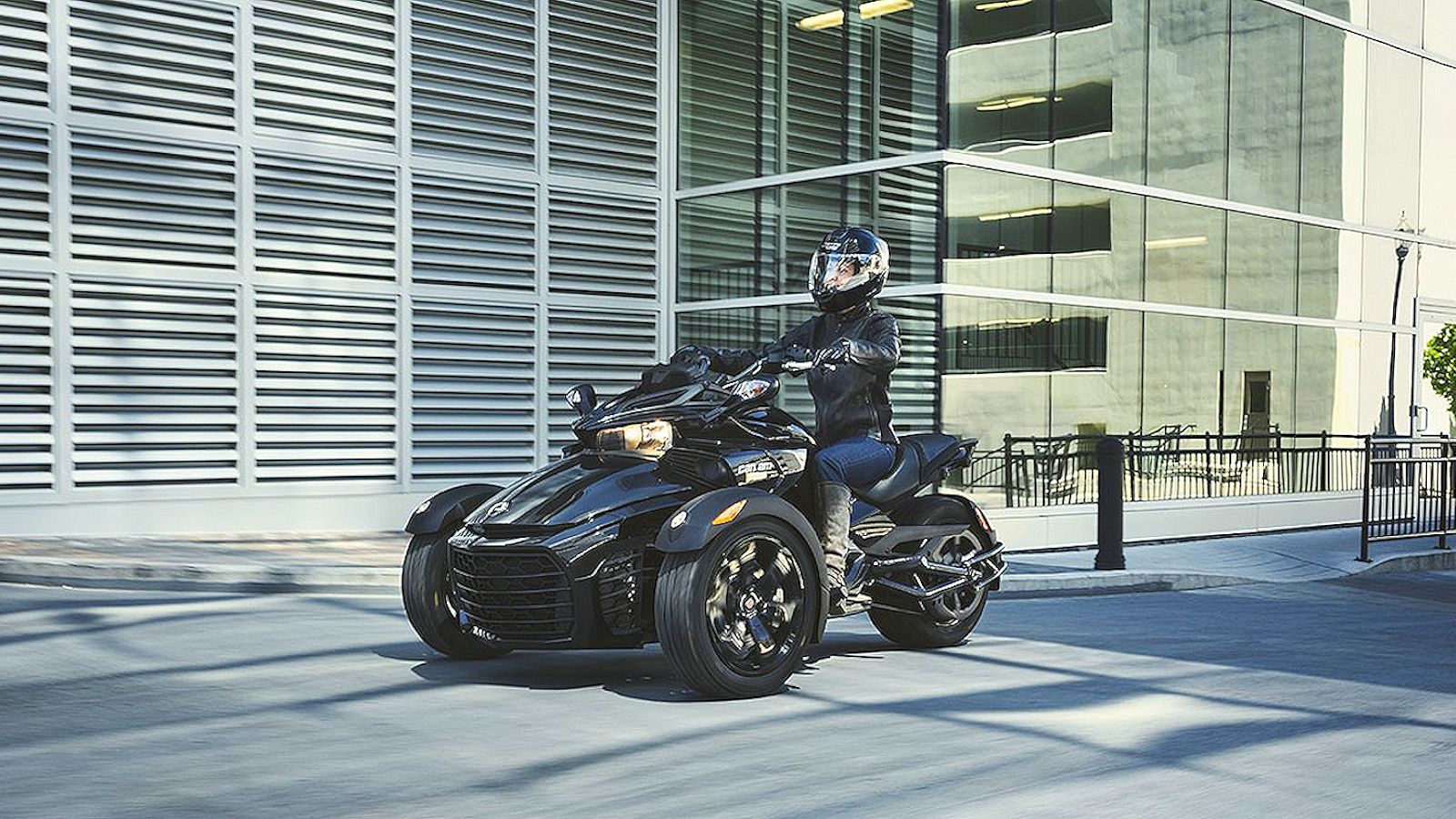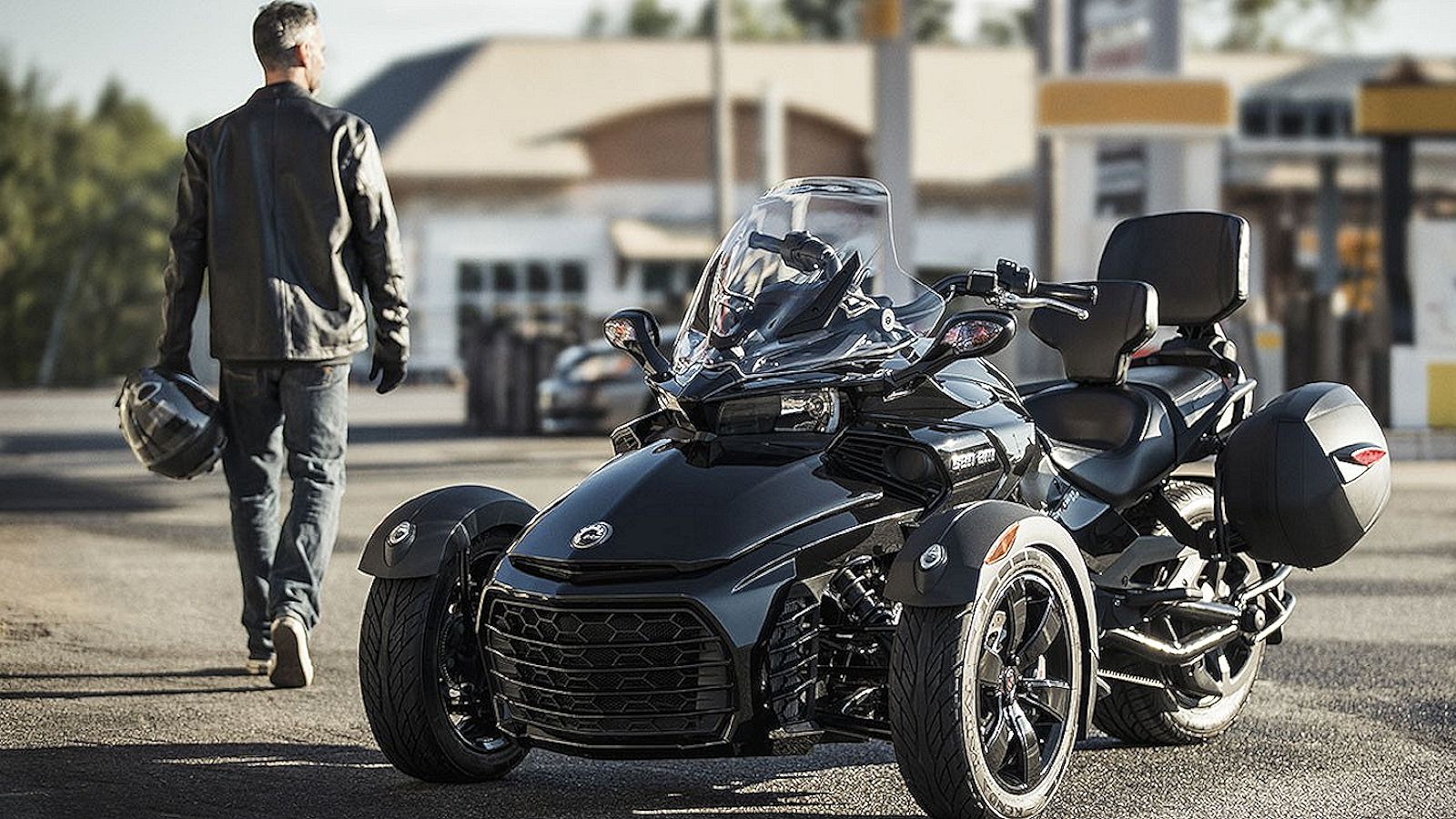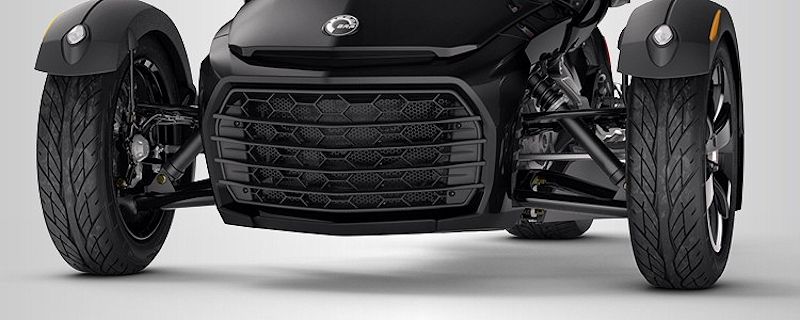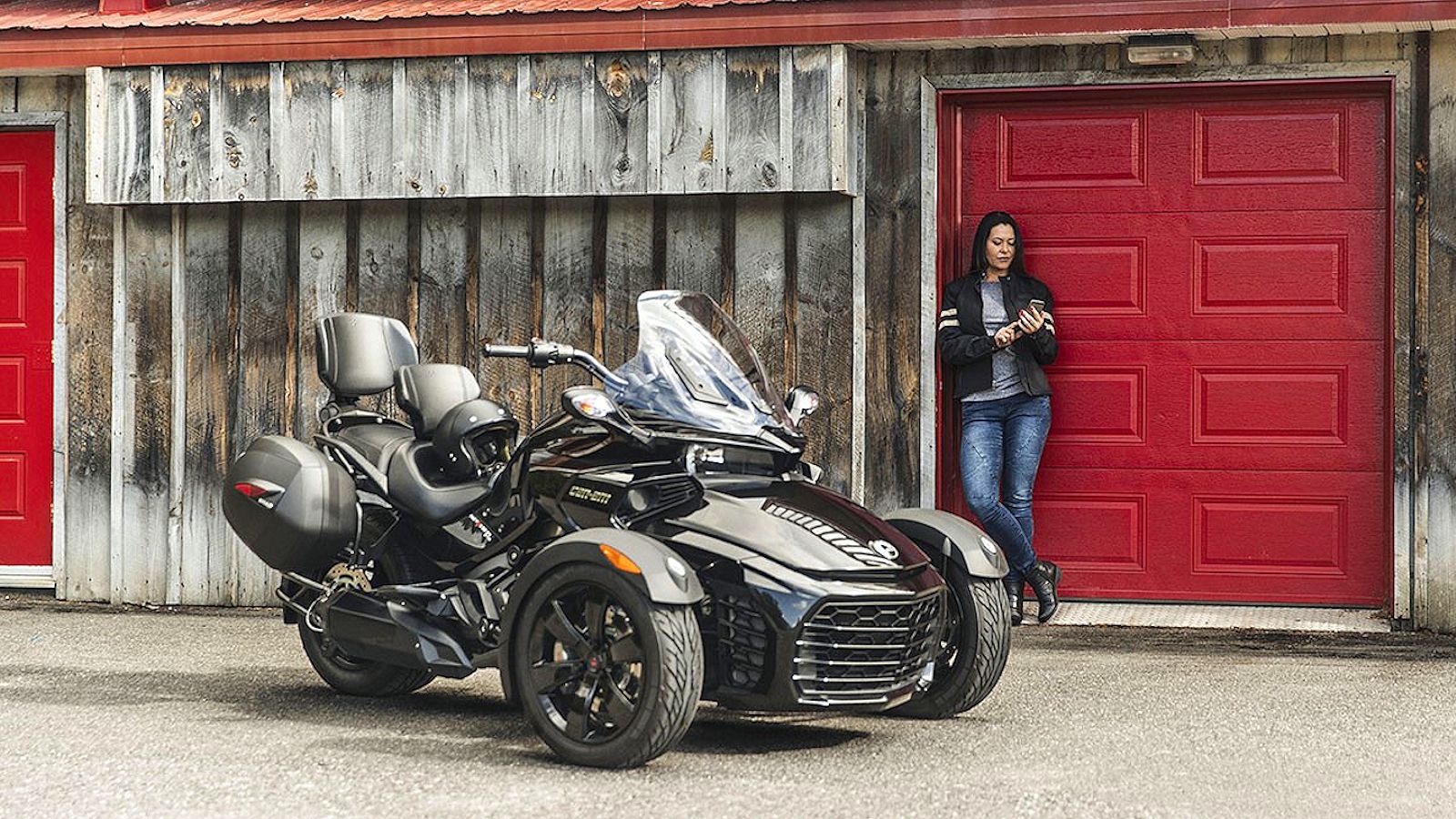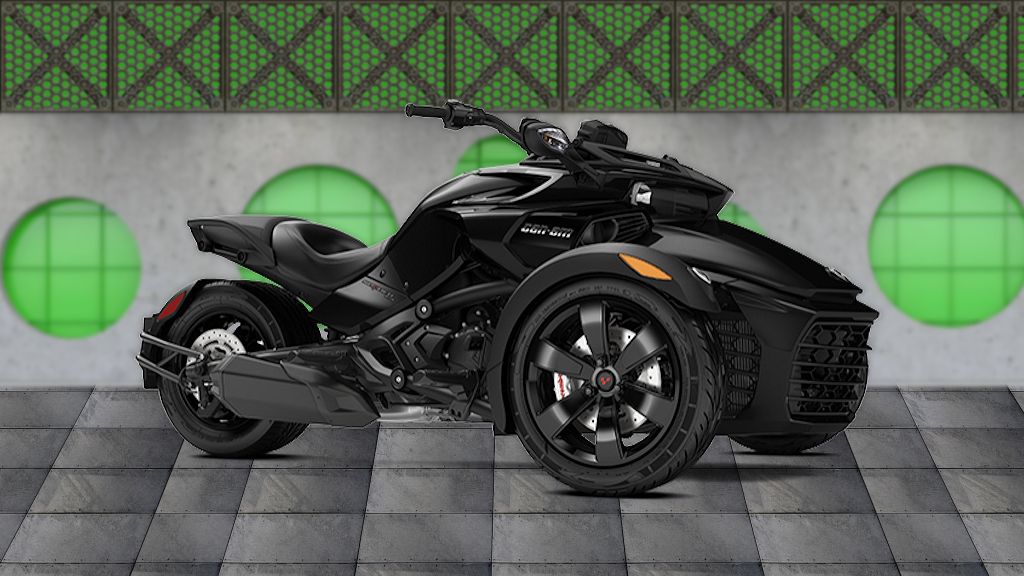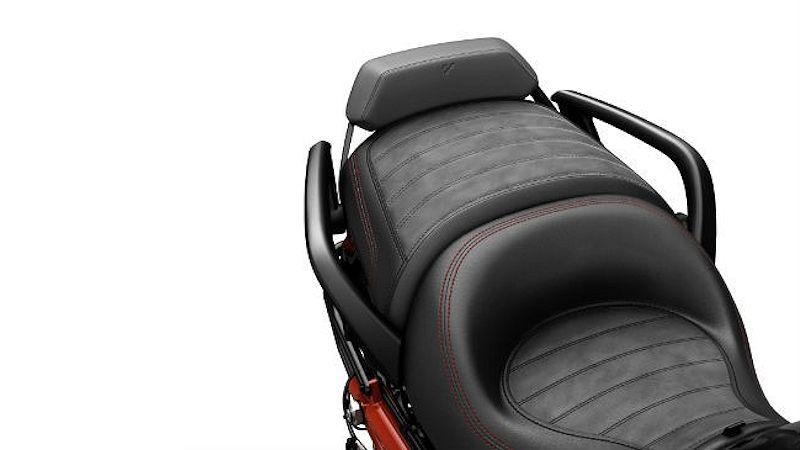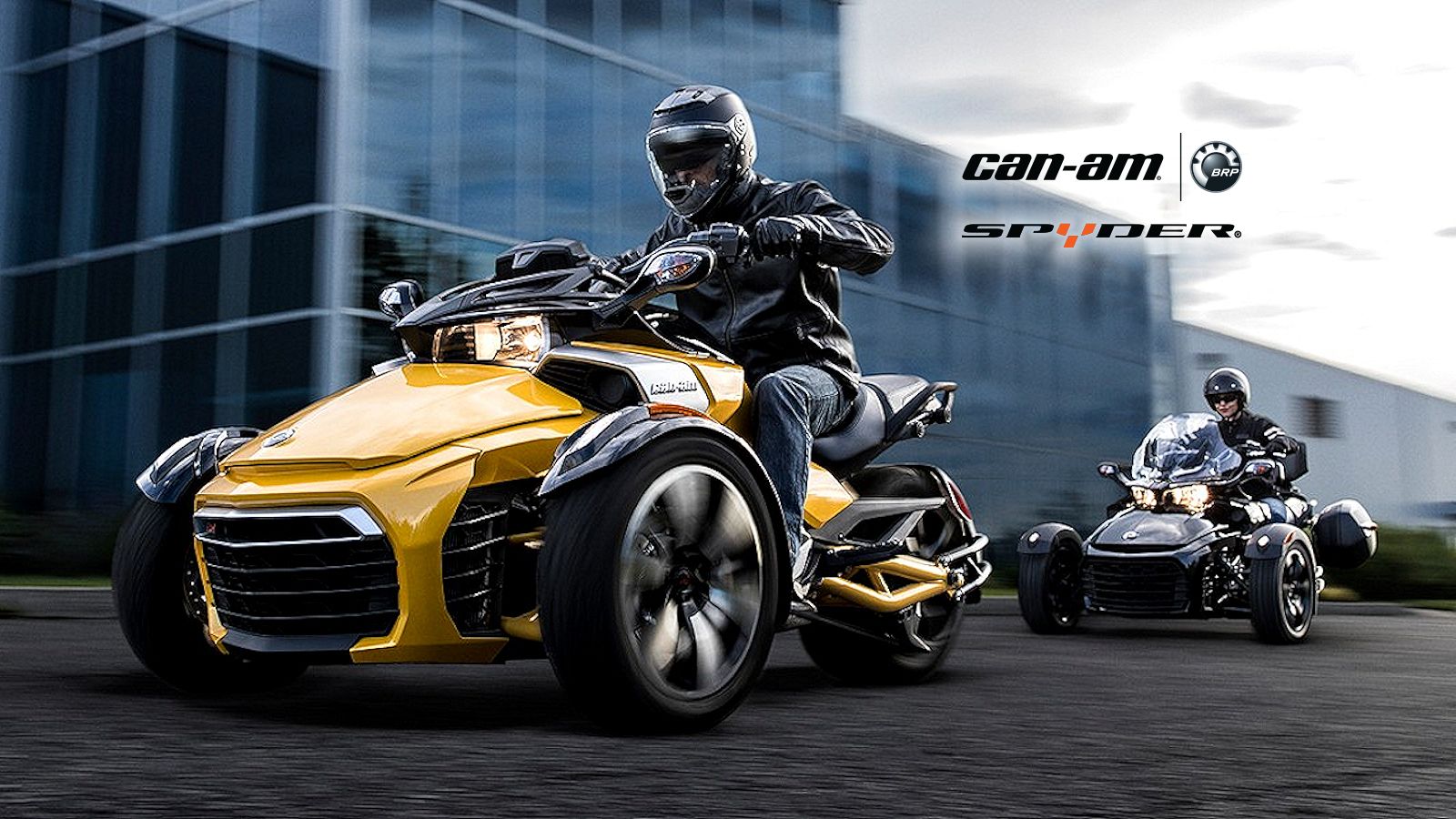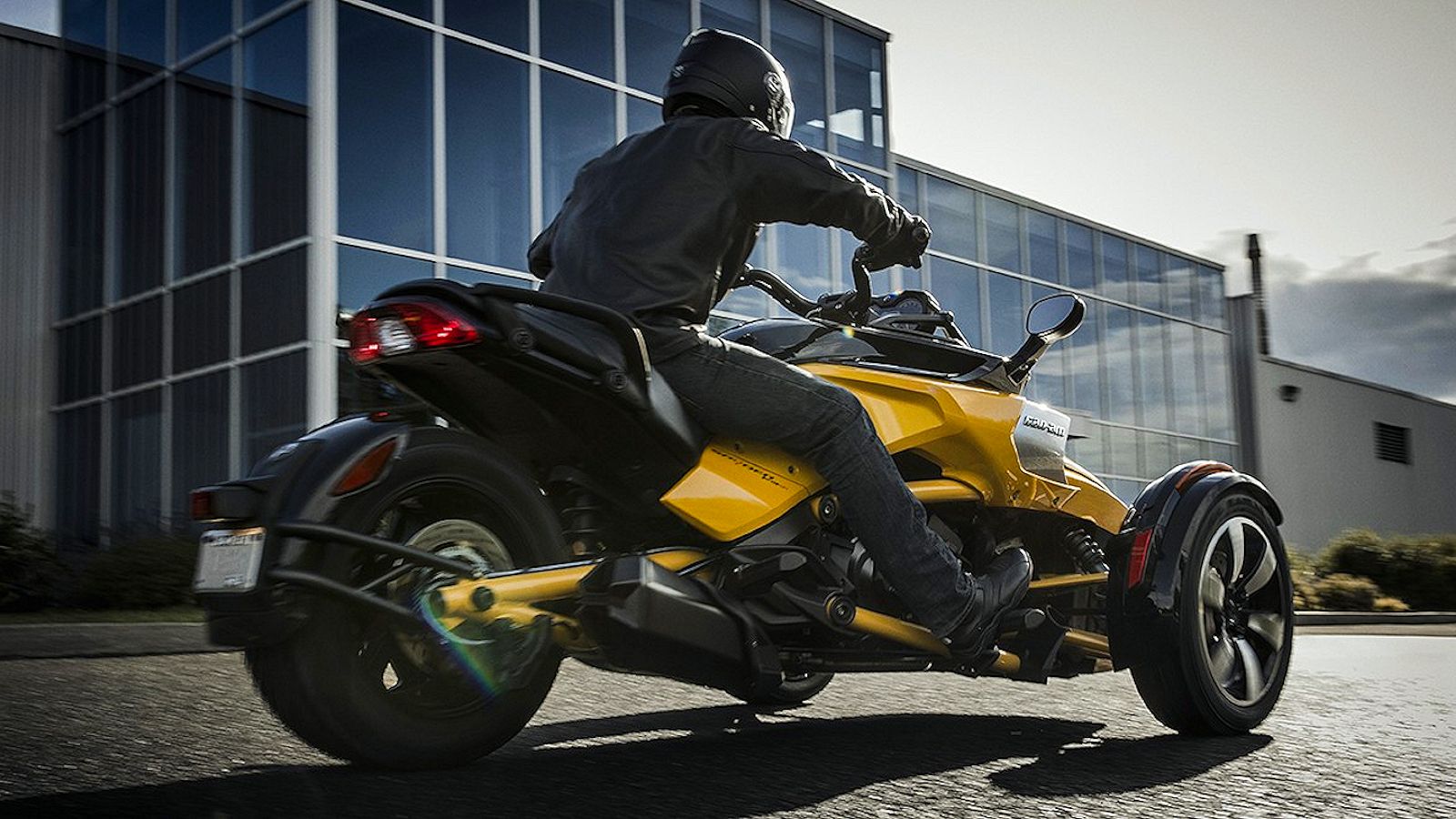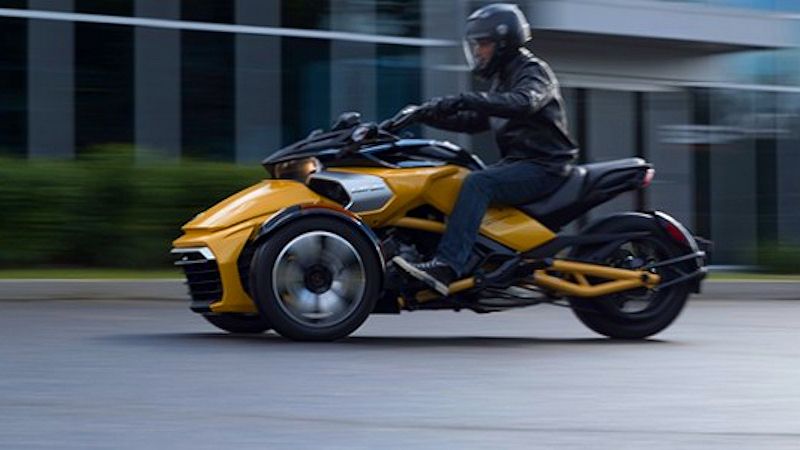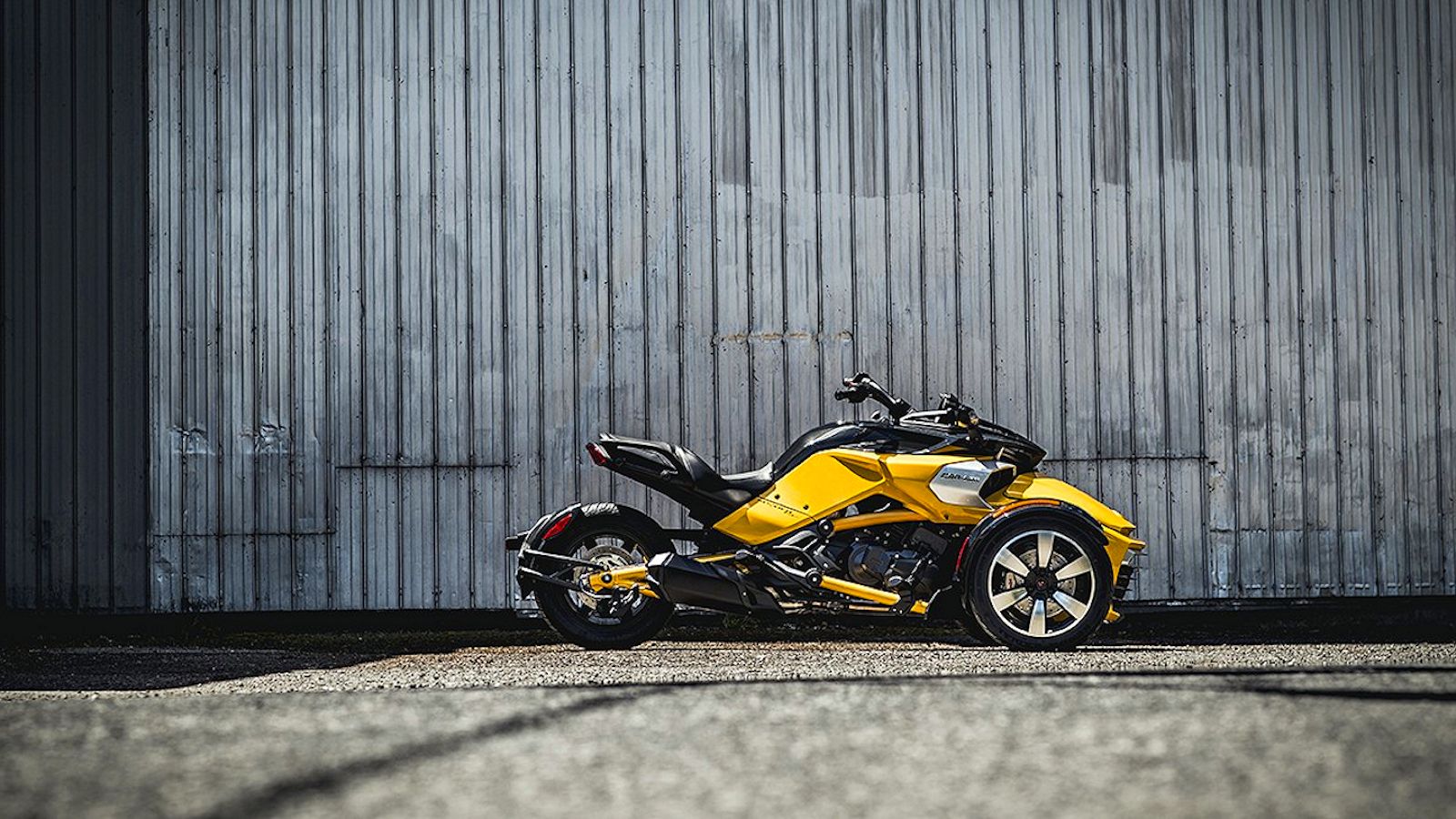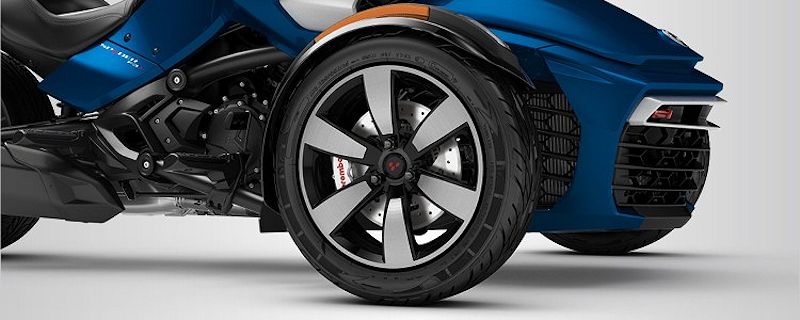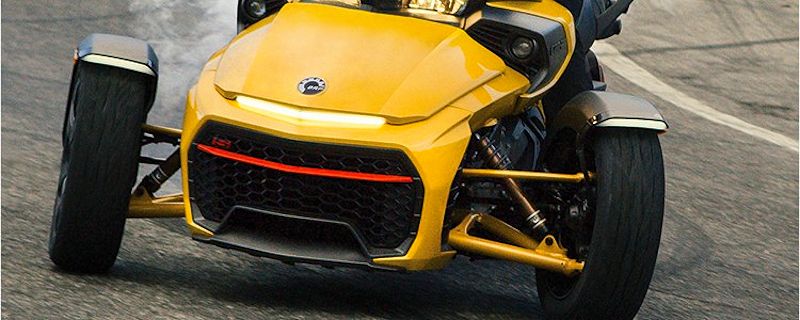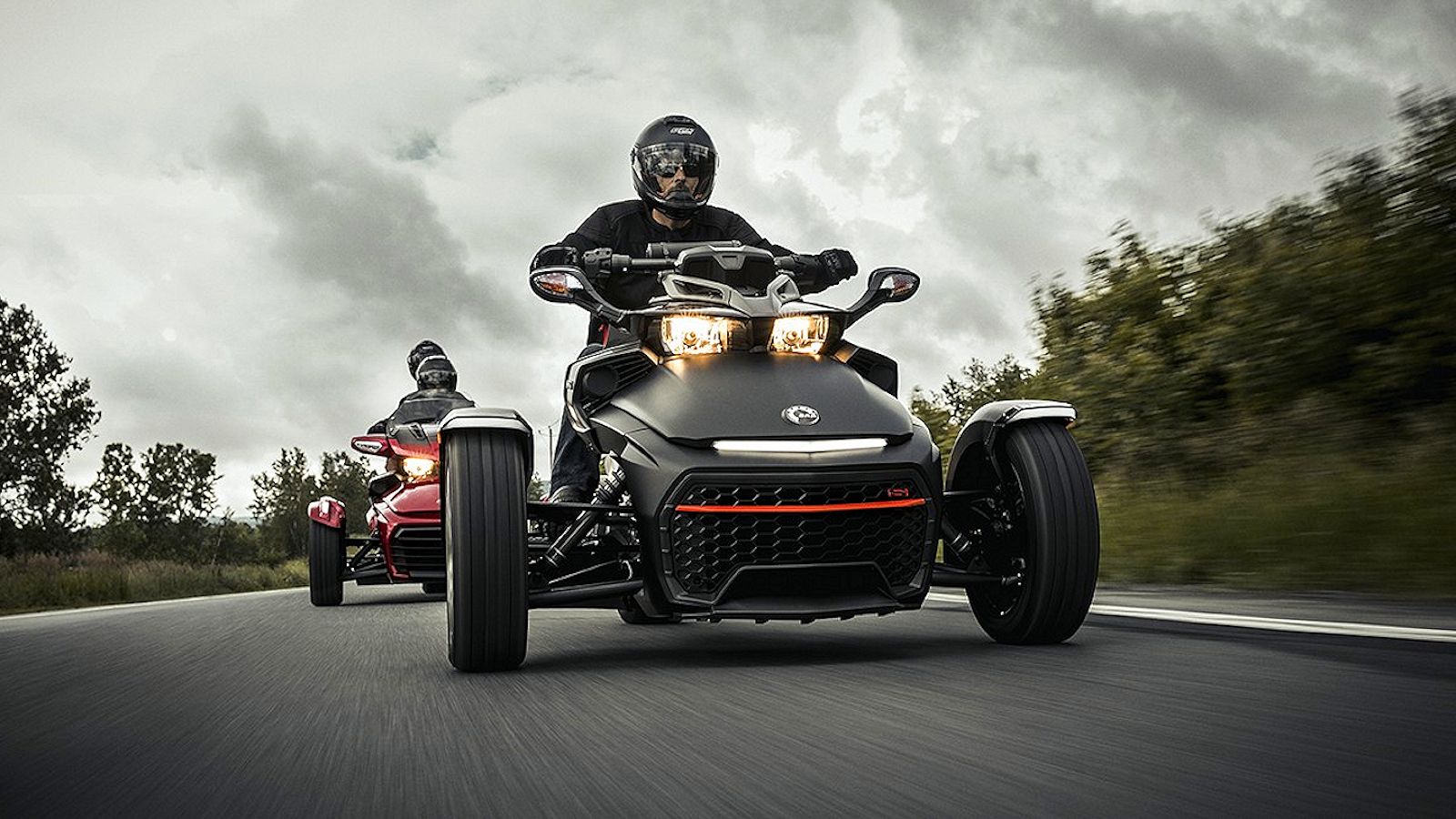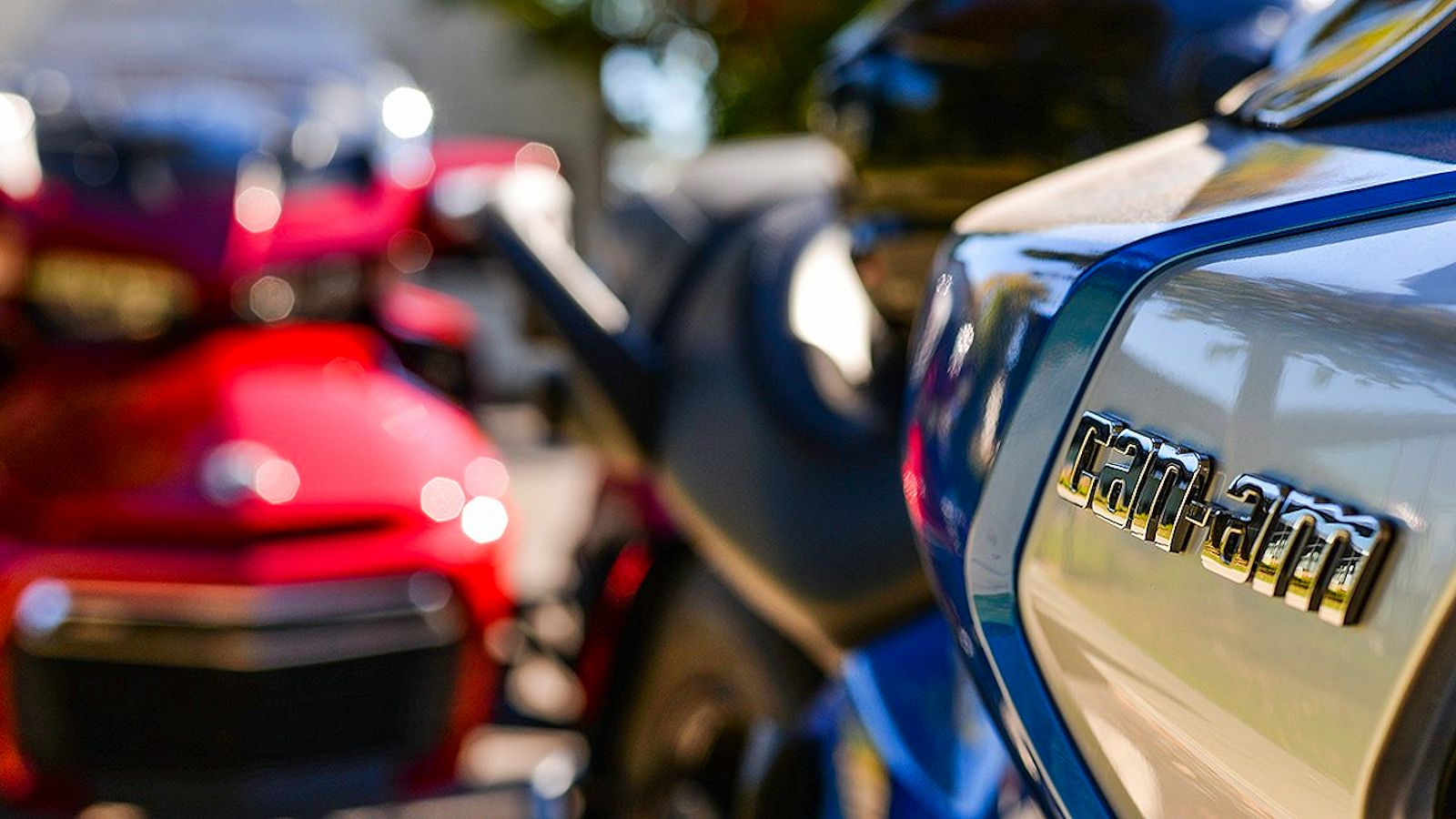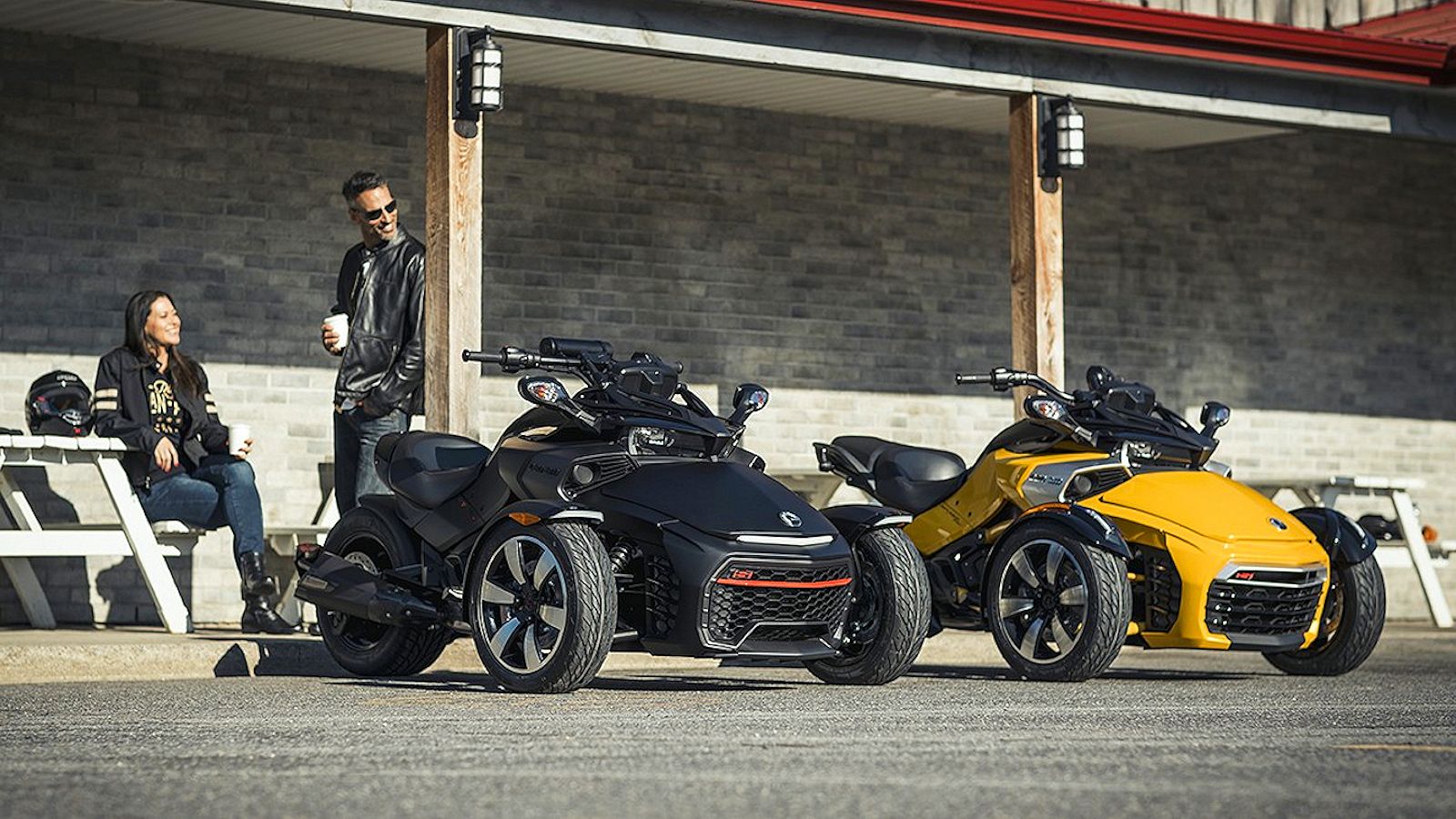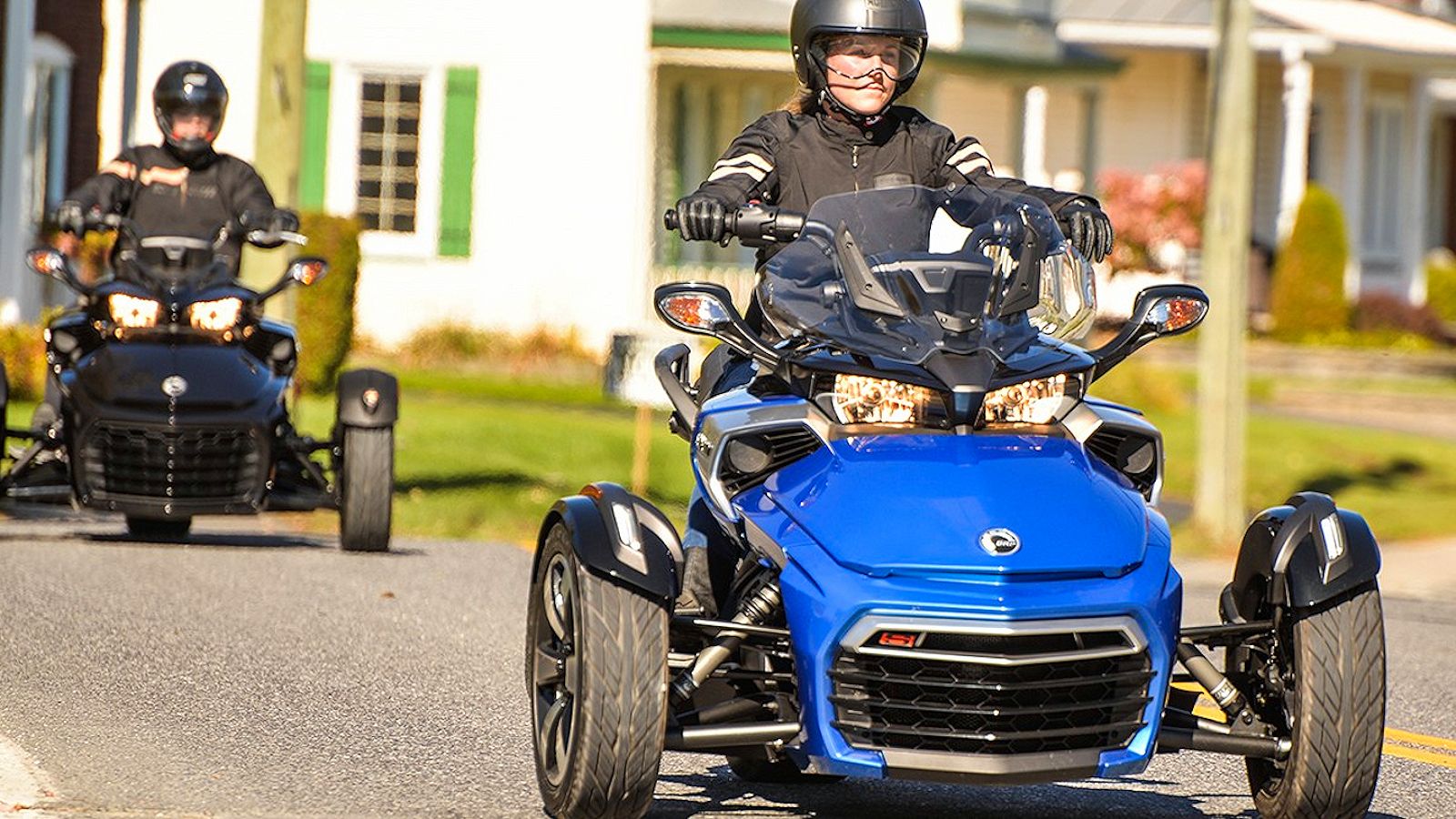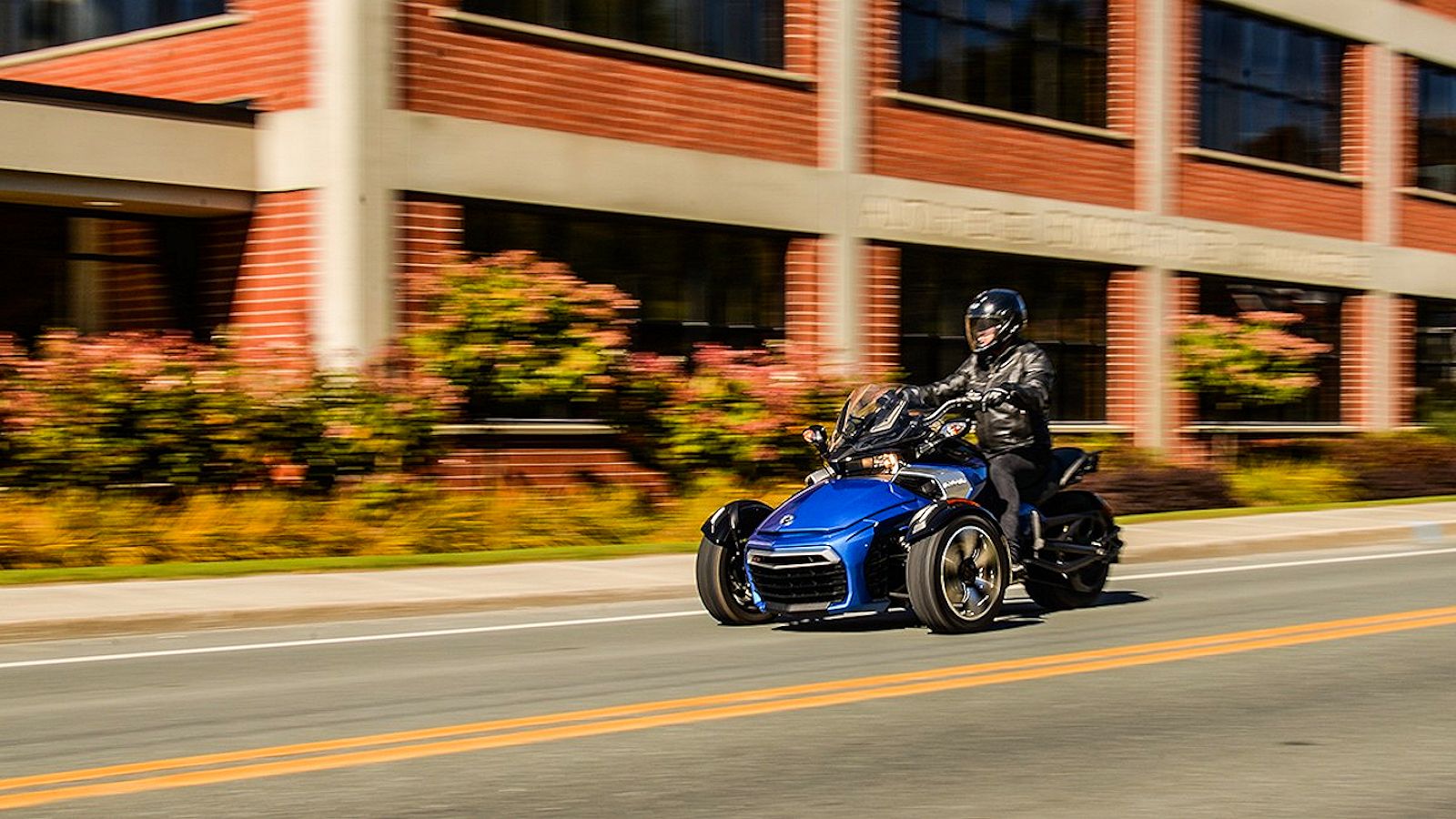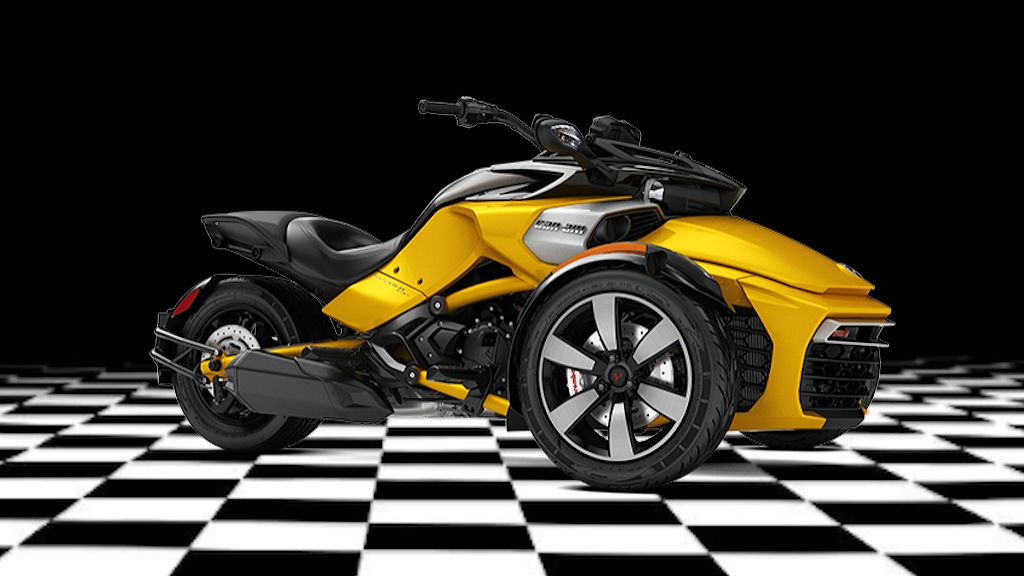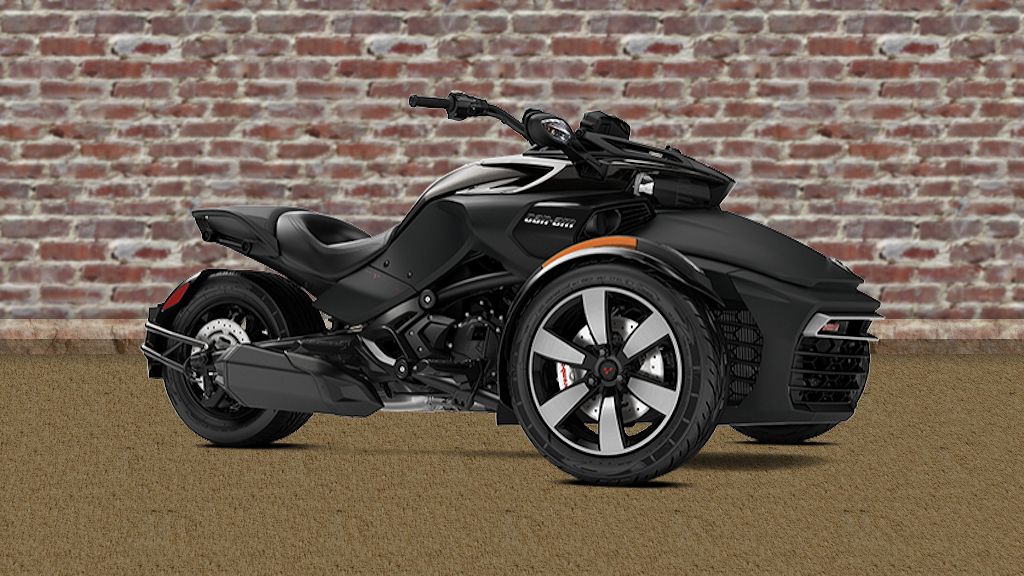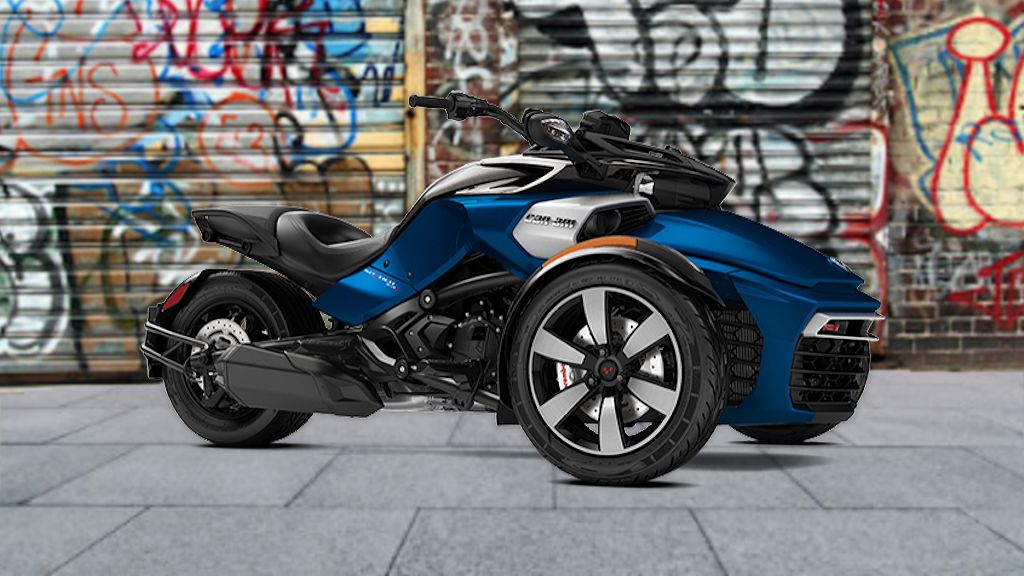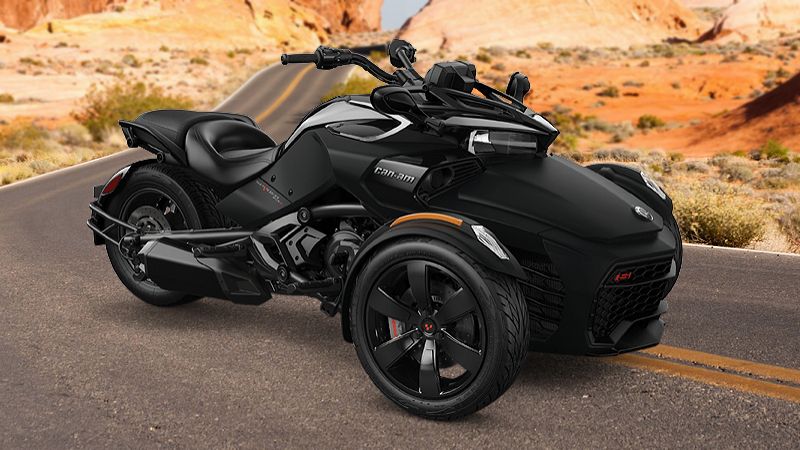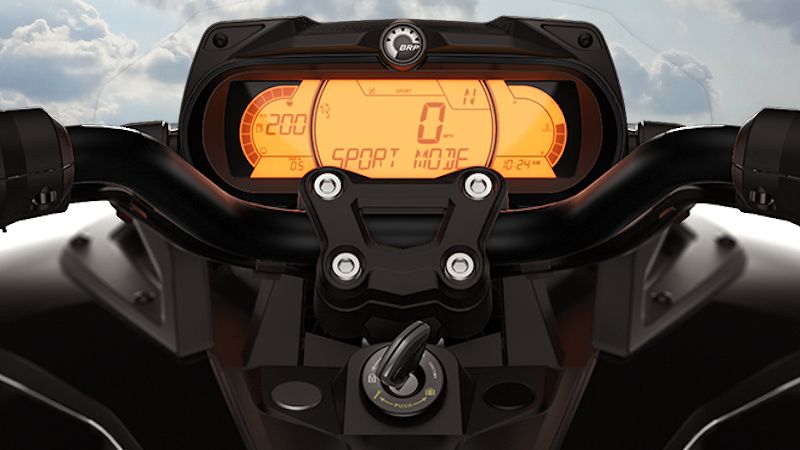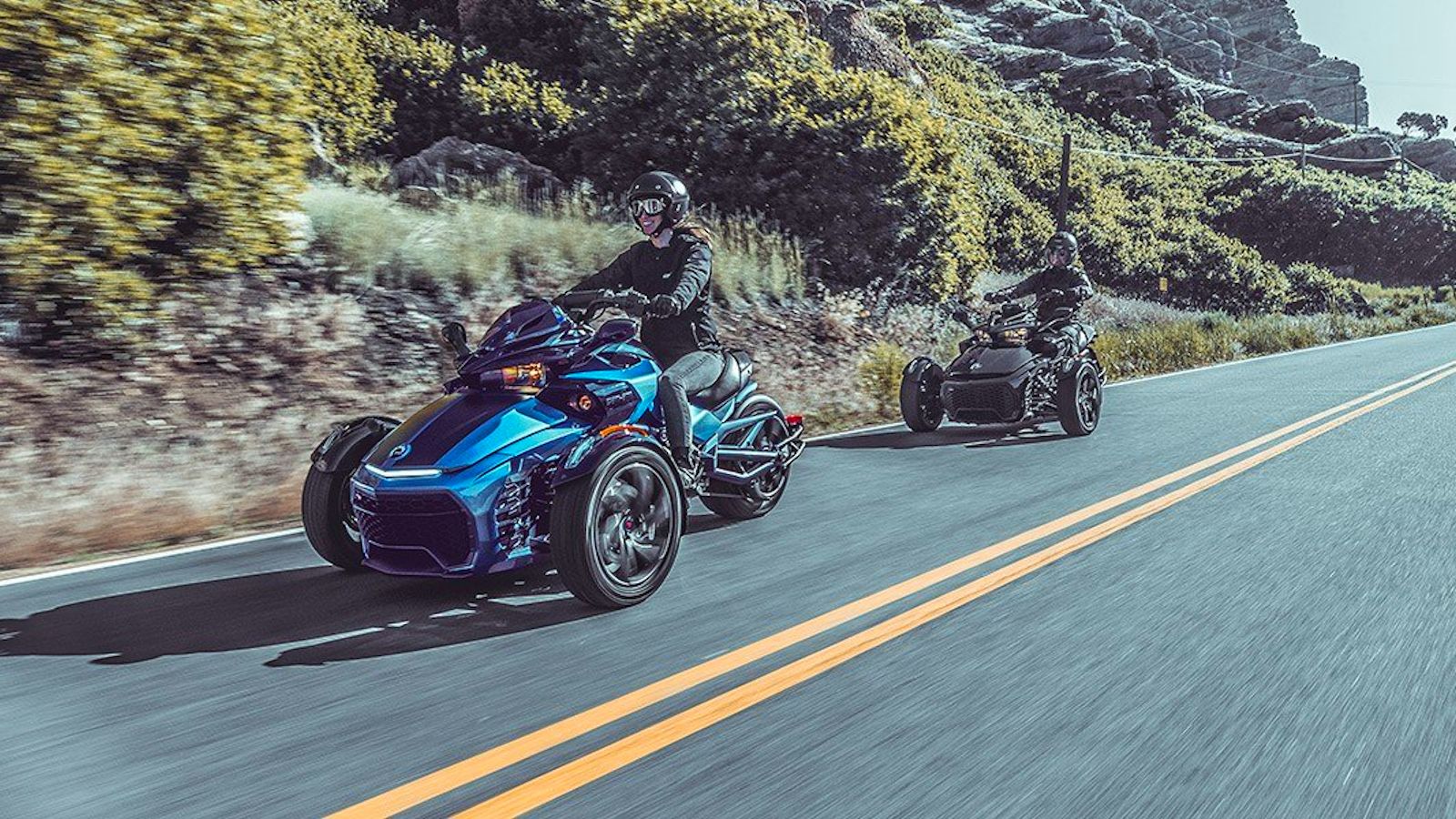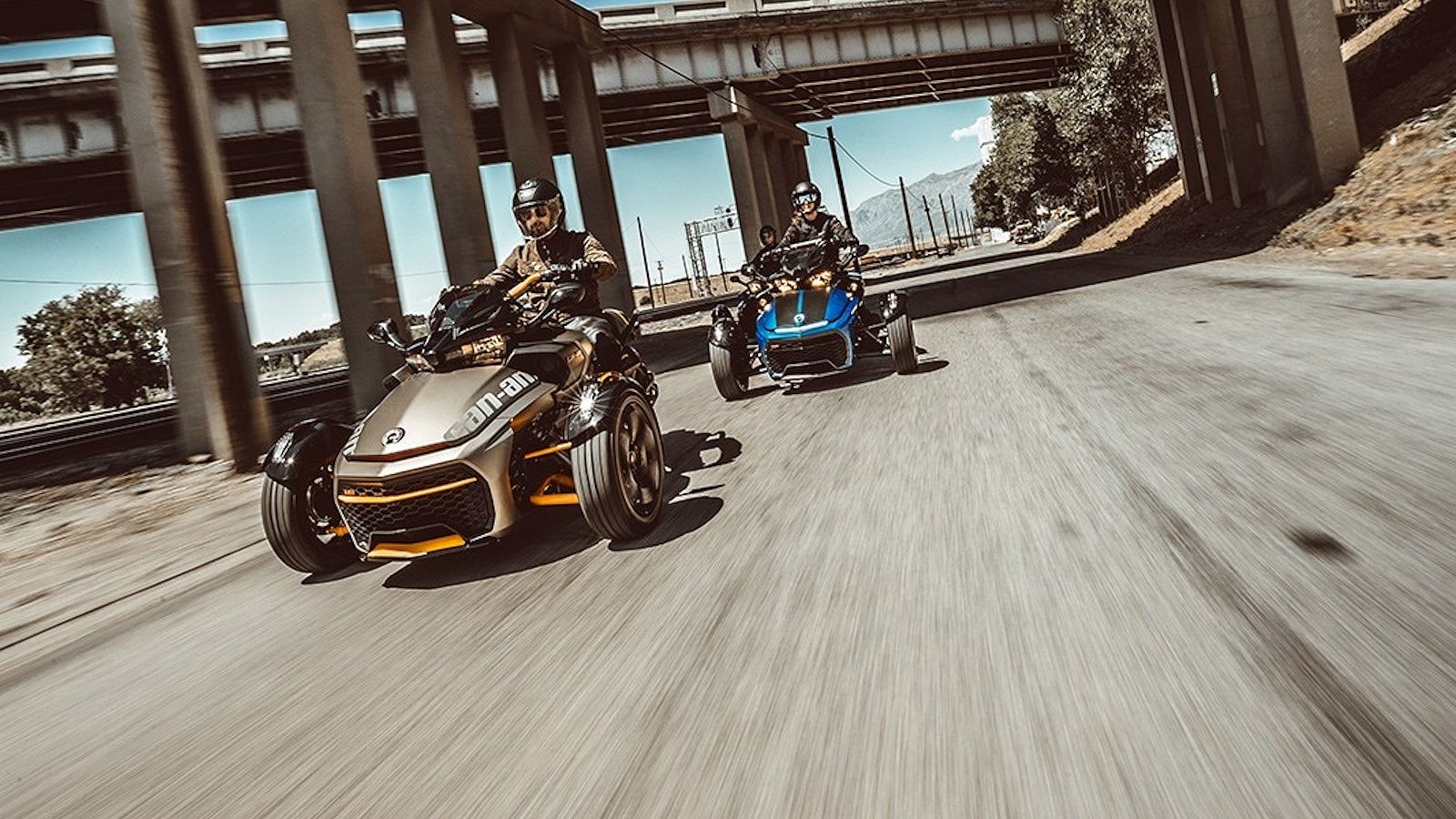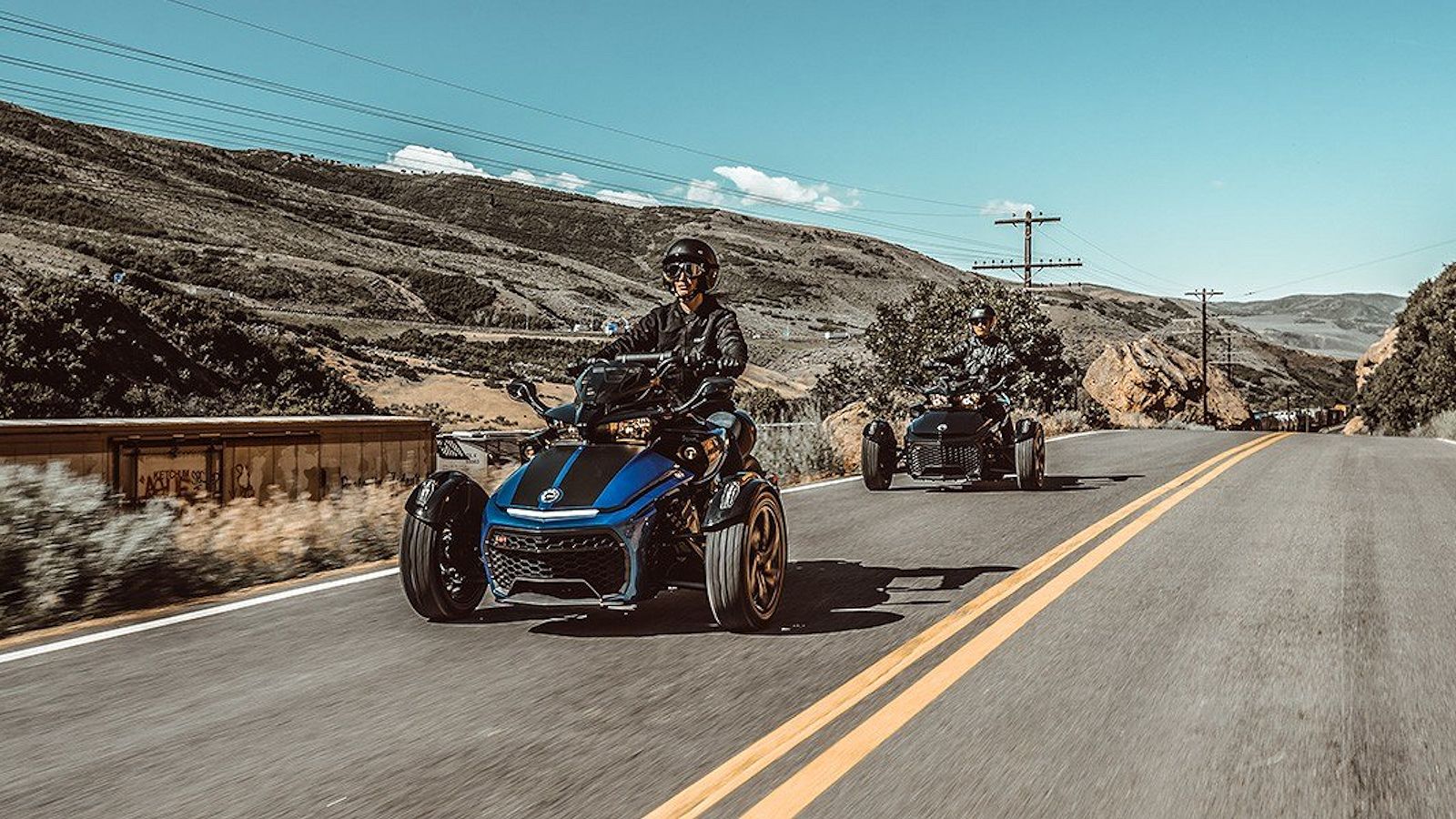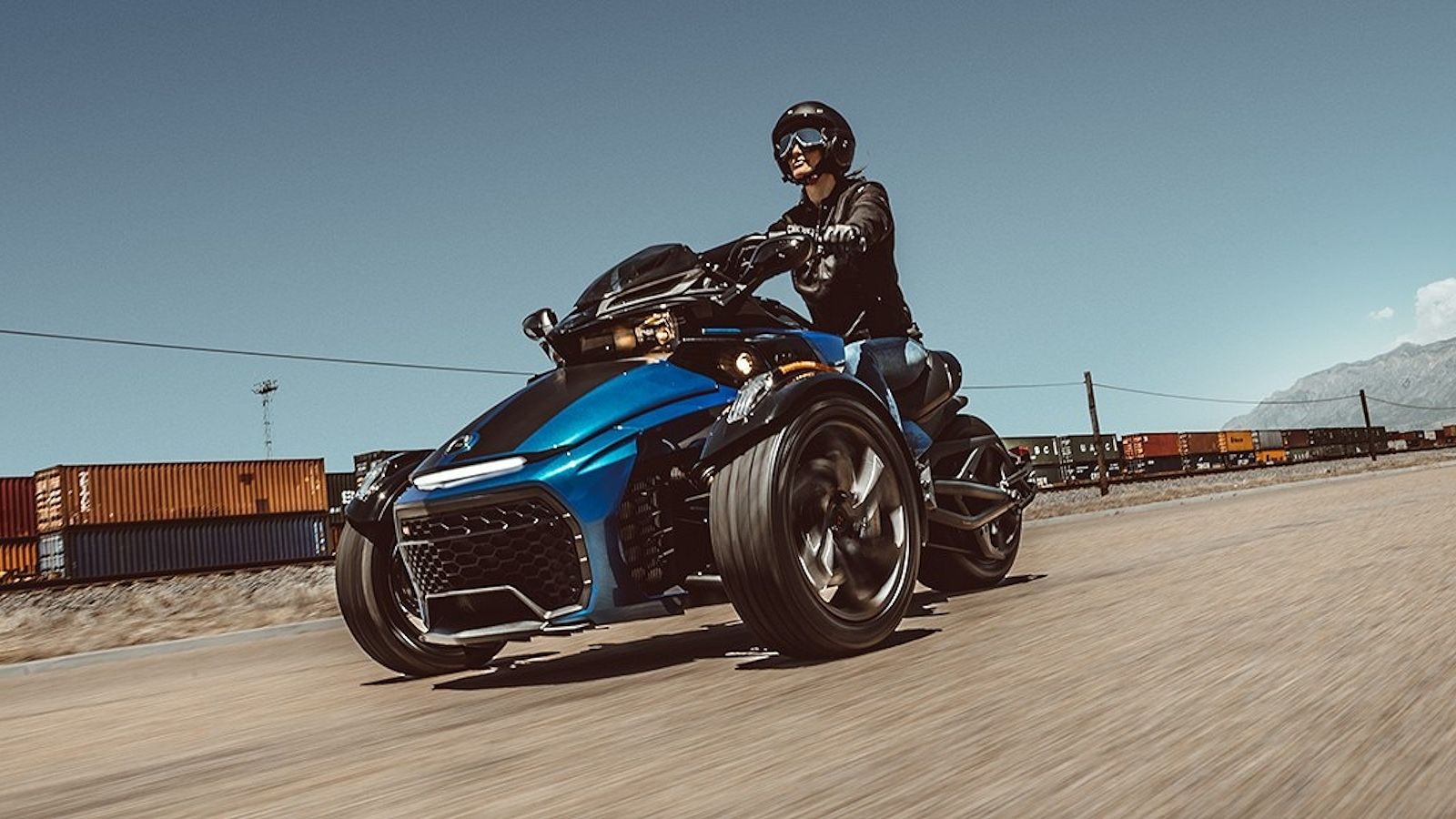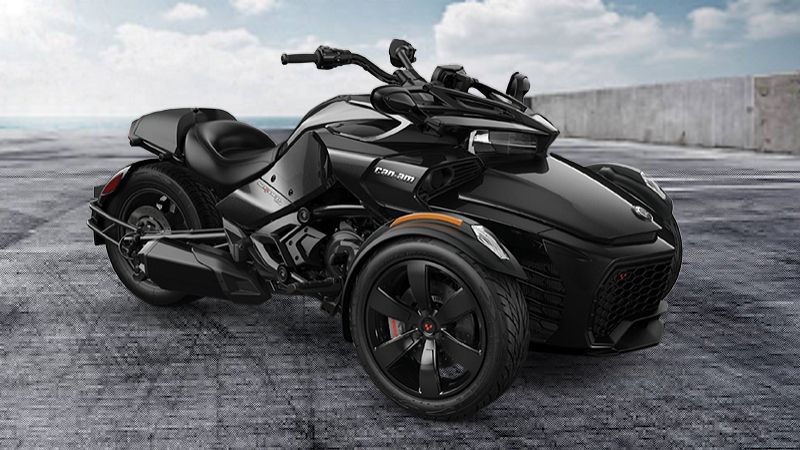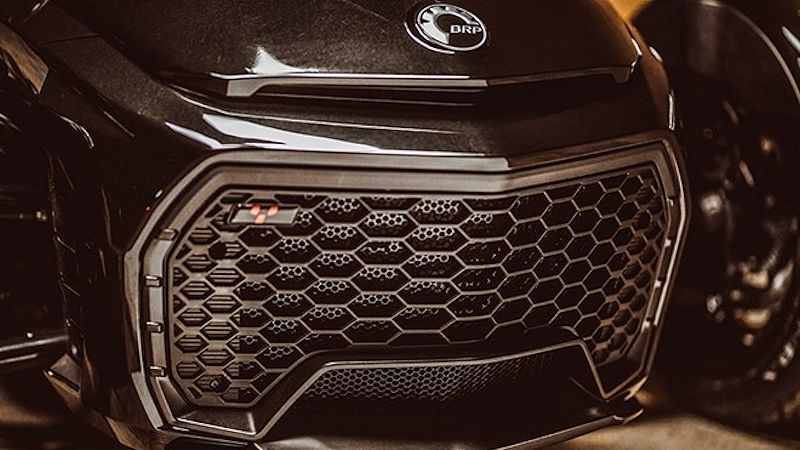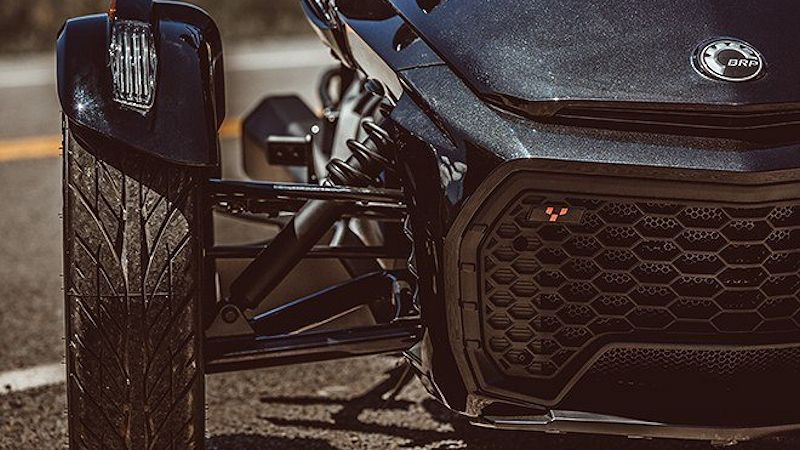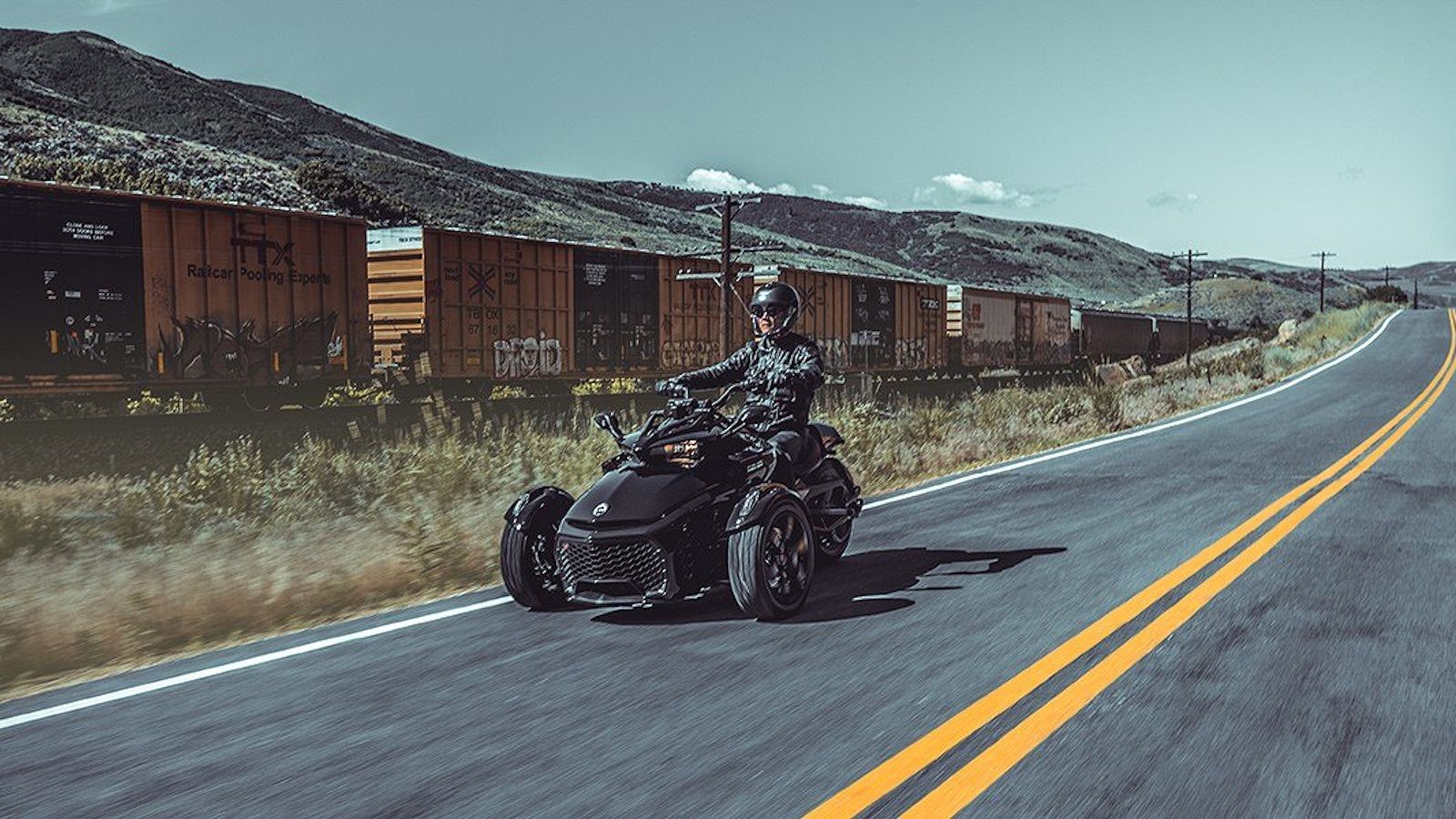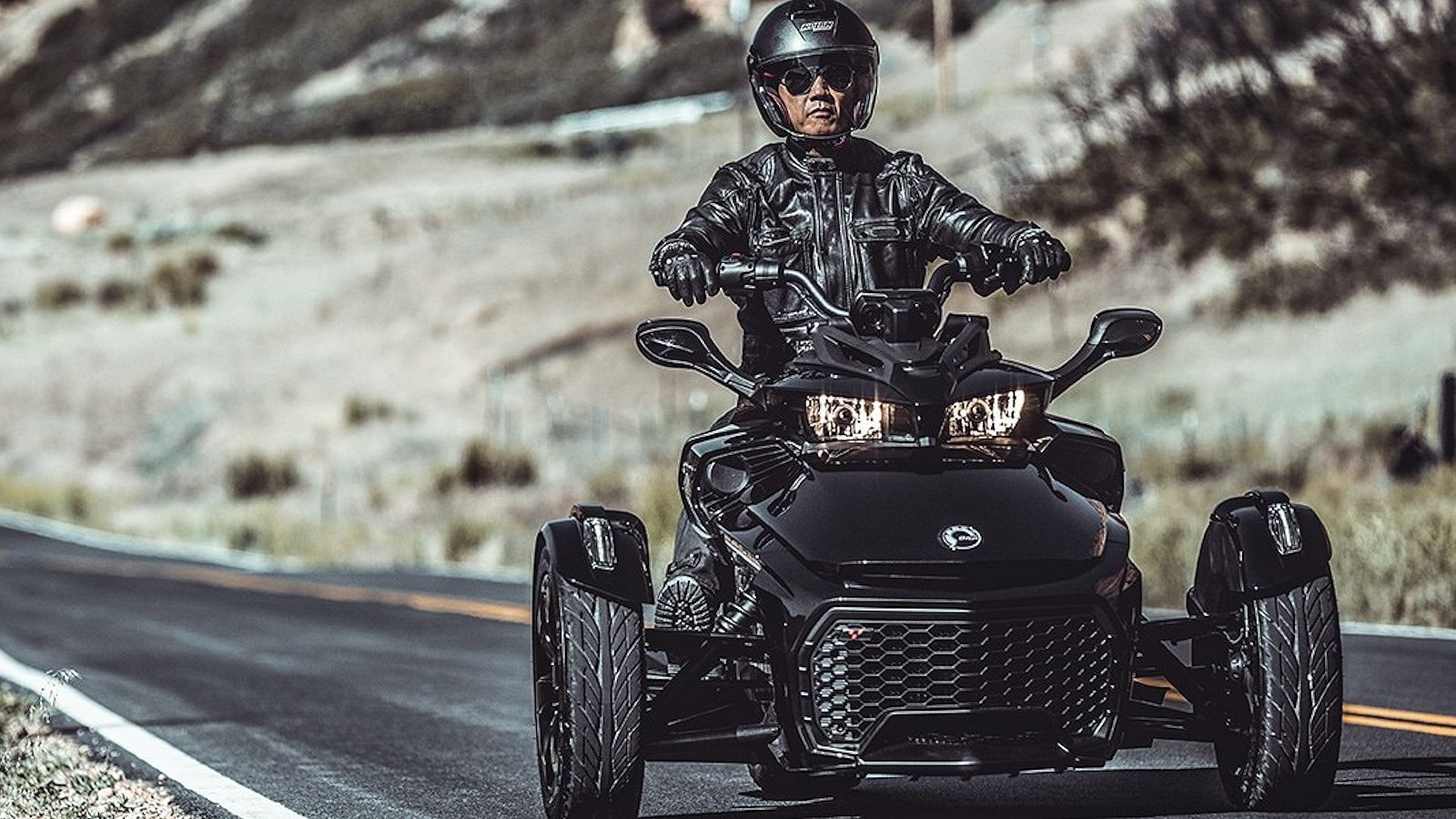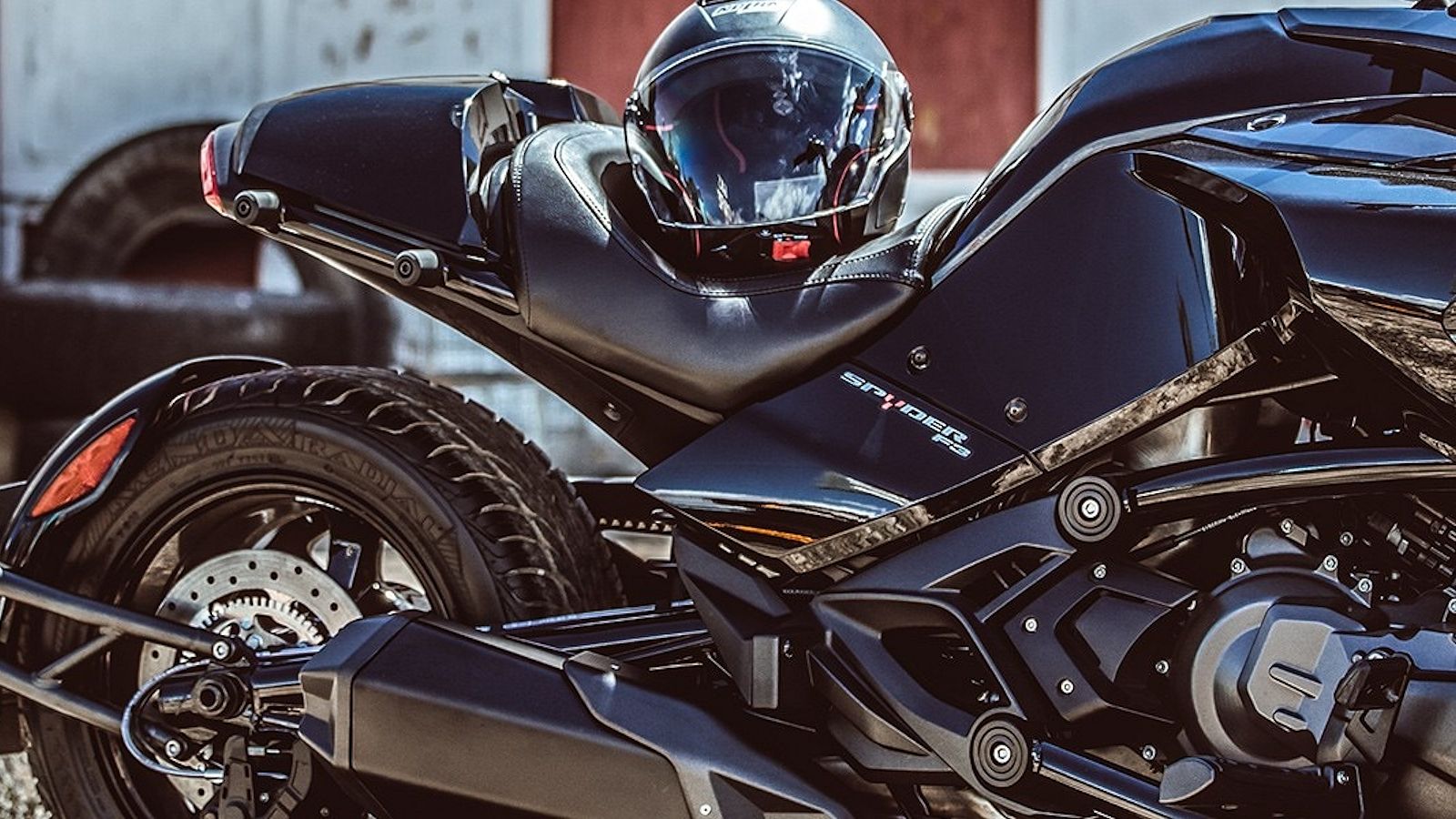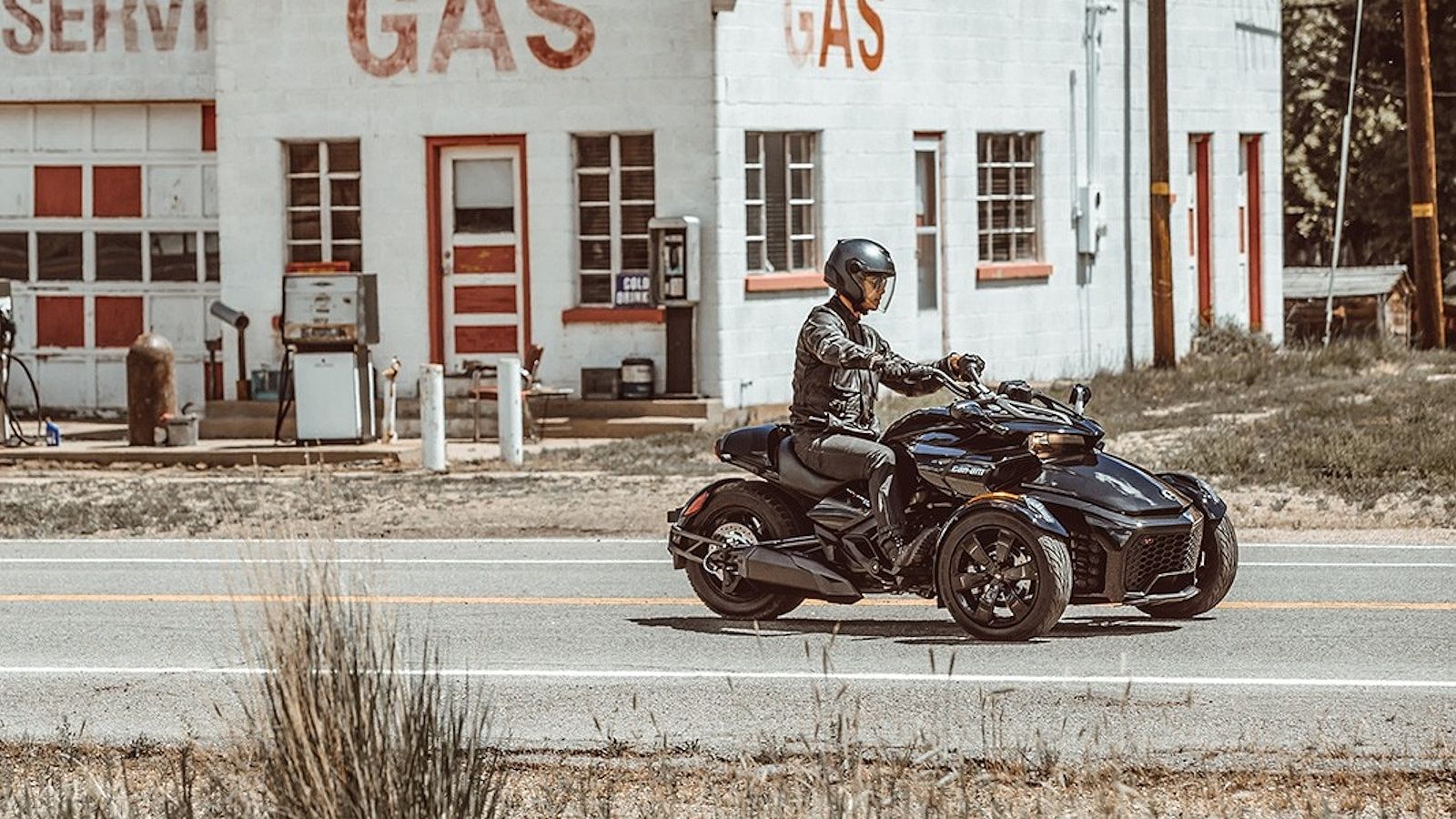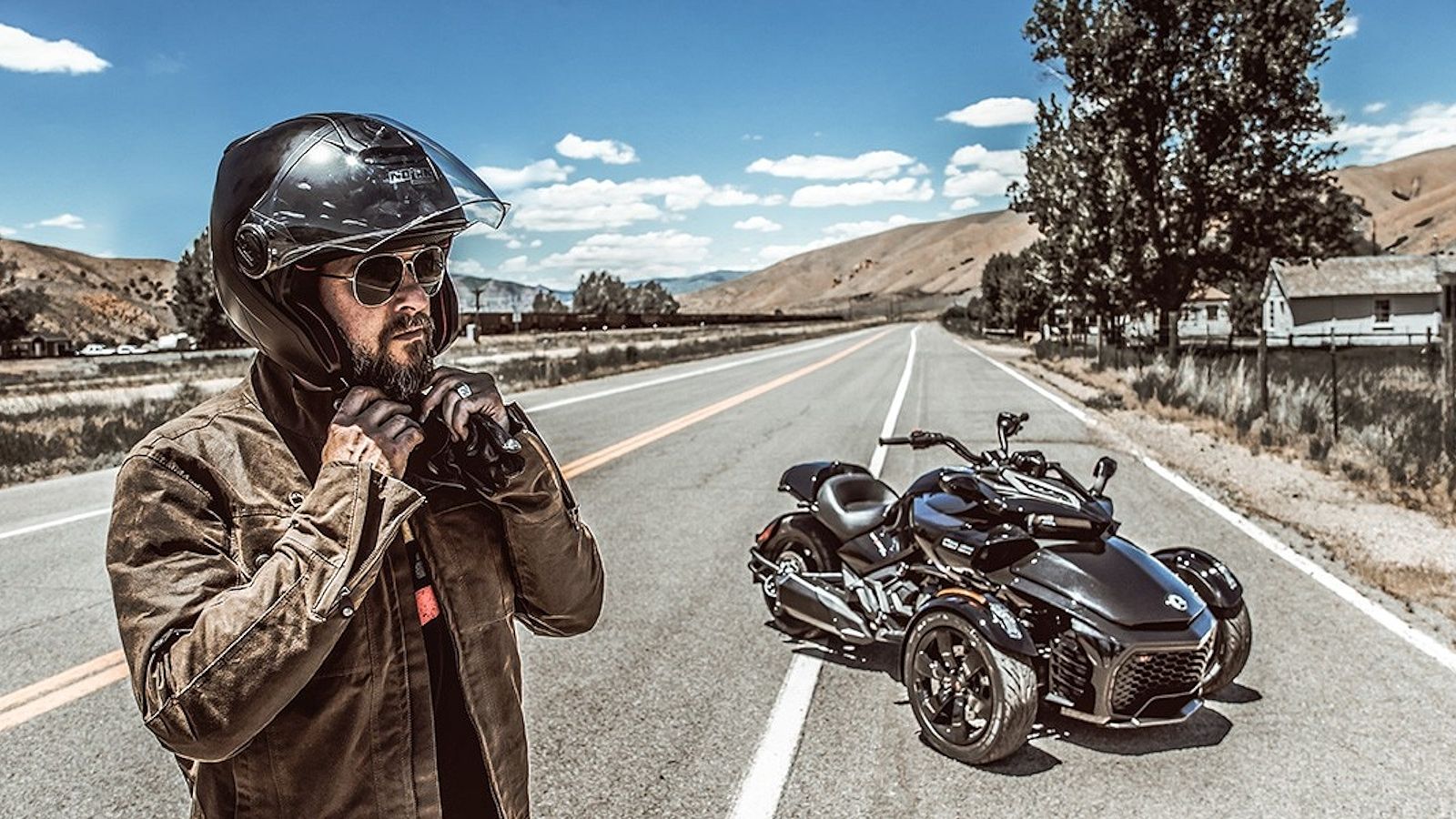Can-Am carries its sport-cruising roadsters, the Spyder F3 and F3-S, into 2019 with the 100-plus horsepower Rotax engine, as always with minimal design features in order to keep weight down and performance up. The spectacular safety package also reprises its role with traction control, stability control, and ABS on board. Spyders are still something of a curiosity and not quite what you would call mainstream just yet, but the Bombardier Recreational Products presses forward with the F3 / F3-S duo as both its entry-level and most sport-tastic rides in the lineup.
Continue reading for my review of the Can-Am Spyder F3 and F3-S.
2018 - 2019 Can-Am Spyder F3 / F3-S
- Make: Array
- Model: 2018 - 2019 Can-Am Spyder F3 / F3-S
- Engine/Motor: Rotax 1330 ACE
- [do not use] Vehicle Model: Array
Can-Am Spyder F3 / F3 S Design
Viewed in profile from the handlebars back, the F3 brothers could pass for supersports with a ridiculously wide rear tire. Starting out back, a generous hugger contains the spray from the rear tire to keep the rear end sporty looking and clean with a taillight housing that serves as the terminus of the subframe, and I gotta' say I'm a fan of that look. Bigly.
A wide subframe allows for a wide p-seat with J.C. handles to help keep your passenger mounted and supplement your cargo capacity with a nice flat spot and anchors for the bungee hooks. The deep-scoop saddle puts you in the machine more that on it with a low, 26.6-inch seat height, but that doesn't matter as much here as the width of the waist prevents easy ground access. The only time you'll reach for the ground is when you're dismounting, so that's not even a consideration.
Stability is inherent in the Delta-trike design, and if you're new to having your fists in the wind then the lack of leaning and loss of countersteering probably won't bother you a bit. Neither will the combined brakes with only a foot control for all three anchors nor the loss of all hand levers. Well, unless you go for the F3-S that comes with an optional six-speed plus reverse SM6 manual transmission that rocks a good old-fashioned clutch lever and foot shifter. Can-Am's UFit system allows you to control the size and shape of the rider's triangle with adjustable footpegs and a selection of handlebar sizes, so you can tweak it to fit a wide range of body types and riding postures.
Forward of the handlebar, the design sharply diverges from the bike world with automotive roadster-style front end and a VW Beetle-type trunk to lead the way. Storage is limited to 6.5 gallons; much less than its bagger and dresser cousins, but still enough for some light grocery-getting and errand-running missions or enough gear for a weekend getaway.
The front fairing is minimal, and it serves mainly to shunt air from the hood area off to the sides like a cowcatcher so it doesn't add to the forces working on the unprotected upper body. Even though the head-on view is anything but bike-like with an automotive-style grille visage, I gotta say the look works. It is, after all, a machine with a foot in two different worlds.
New for 2019, the F3 and F3-S feature all-new fully-digital gauges that use new digital technology making them easier to read. Gauges include odometer and tach, as well as trip and hour meters, gear position indicator, temperature, fuel level, clock, and engine lights.
Can-Am Spyder F3 / F3 S Chassis
A surrounding-spar frame supports the structure with a motorcycle-type swingarm out back and a set of automotive-style A-arms/anti-roll bars to articulate the wheels. Both rides feature Sachs shocks to tame the rear wheel with 5.2 inches of travel, but while the base model runs a set of Sachs Big-Bore shocks up front, the F3-S rides on gas-charged Fox Podium shocks, both with 5.1 inches of travel.
When it comes time to haul it down, the three 270 mm brake discs are standing by with a pair of four-piston Brembo binders up front and a single piston anchor out back, all under the unified brake system and ABS overwatch. An electrically-actuated parking brake rounds out the brakeage.
All-around 15-inch rims mount a pair of 165/55 hoops up front and a 225/50 out back. These aren't skinny motorcycle tires with a small oval contact patch; these are wide auto-type tires with lots of grip to keep you planted in the curves and the safety systems to allow you to safely get the most out of the ride.
A Stability Control System and Traction Control System help prevent rollovers and spinouts with a Dynamic Power Steering feature that varies the strength of the steering correction based on input and vehicle speed. That last one is of particular importance since there is no countersteering effect to help you turn, you'll actually have to wrestle the bars around using upper-body strength but with liberal assistance from the system. Easy-peasy, and everything you need to maneuver at speed or around the parking lot.
|
Front Suspension: |
Double A-arm with anti-roll bar |
|
Front Shocks Type / Travel: |
SACHS Big-Bore shocks / 5.1 in. (129 mm) (F3-S: Gas Charged FOX PODIUM shocks / 5.1 in. (129 mm)) |
|
Rear Suspension: |
Swing arm |
|
Rear Shock Type / Travel: |
SACHS shock / 5.2 in (132 mm) |
|
Electronic Brake distribution system: |
Foot-operated, hydraulic 3-wheel brake |
|
Front Brakes: |
270 mm discs with Brembo 4-piston fixed calipers |
|
Rear Brake: |
270 mm disc, 1-piston floating caliper with integrated parking brake |
|
Parking Brake: |
Electrically actuated |
|
Tires, Front/Rear: |
MC165 / 55R15 55H/ MC225 / 50R15 76H |
|
Aluminum Front Rims: |
6-spoke, Deep black, 15 x 5 in. (381 x 127 mm) (F3-S: 6-spoke, Machined Deep Black High-Gloss, 15 x 5 in. (381 x 127 mm)) |
|
Aluminum Rear Rim: |
Deep Black, 15 x 7 in. (381 mm x 178 mm) |
Can-Am Spyder F3 / F3 S Drivetrain
The Rotax engine made a name for itself in the marine and aviation sectors, and it provides the drive for the entirety of the Spyder family. A Rotax 1330 ACE powerplant drives the F3 brothers with a consistent 96 pound-feet of torque at 5,000 rpm, but while the base model caps out with 105 horsepower at 6,000 rpm, the S model boasts 115 ponies at 7,250 rpm plus an additional “sport mode” meant to get the most out of the system.
A water-cooled triple, the plant runs with 84 mm bores and an 80 mm stroke with an RbW throttle and EFI to manage the induction and the mixture, plus the S model gets an electronic cruise control on top of all that yumminess. The base model only offers a six-speed, semi-automatic (SE6) transmission to manage the drive ratios, but so does the S model in addition to the fully manual gearbox. Regardless of which you pick, you can count on a reverse feature to get you out of that nose-downhill parking spot.
|
Engine: |
Rotax® 1330 ACE™ in-line 3 cylinders, liquid-cooled with electronic fuel injection and electronic throttle control |
|
Bore & Stroke: |
3.31 x 3.14 in. (84 x 80 mm) |
|
Power: |
105 hp (78.3 kW) @ 6,000 rpm |
|
Torque: |
96 lb-ft. (130.1 Nm) @ 5,000 rpm |
|
Transmission options: |
6-speed semi-automatic with reverse (SE6) (F3-S: Also 6-speed manual with reverse (SE6)) |
Can-Am Spyder F3 / F3 S Pricing
The price point of Can-Am's entry-level F3 ride actually falls within what most would consider to be the first- or second-upgrade bracket at $15,999 MSRP and is significantly lower for 2019 than it was last year. Predictably, the F3-S broke the $20k mark with a $21,299 sticker last year, but comes in at $18k for 2019. Color choice is limited with only Steel Black Metallic on the base model, and a choice between Monolith Black Satin or Oxford Blue Metallic on the F3-S. You get a two-year warranty with that, and can bump that up by up to 36 months at checkout.
|
Warranty: |
2-year BRP Limited Warranty with 2-year roadside assistance (optional BRP'S B.E.S.T. extended service term available from 12 to 36 months. |
|
Colors: |
|
|
2018: |
F3: Steel Black Metallic, F3-S: Monolith Black Satin, Oxford Blue Metallic, Circuit Yellow Metallic |
|
2019: |
F3: Steel Black Metallic, F3-S: Monolith Black Satin, Oxford Blue Metallic |
|
Price: |
|
|
2018: |
F3: $17,999, F3-S: $21,299 |
|
2019: |
F3: $15,999, F3-S: $17,499 |
Can-Am Spyder F3 / F3 S Competitors
Delta trikes are the hot new thing but traditional trikes are still available, such as the stoplight-burner Freewheeler from Harley-Davidson. The Freewheeler carries some deep historical roots, all the way back to 1932 and the three-wheeled Servi-car, but also comes with all the frailties of the old two-in-back system. Namely, they aren't particularly stable in corners or inherent steadiness of the Delta configuration.
Harley runs the same sort of non-adjustable (except for rear preload) suspension as it does on its large-frame, FLH/FLT model family; and the brakes, while sufficient for the task of slowing the 1,118-pound Freewheeler, feature ABS protection for 2019. H-D does win out in brute gruntiness; the Milwaukee-Eight churns out 122 pound-feet of torque for a slight edge.
That electronic advantage continues for Can-Am into the engine control category, though Harley got onboard with some electronic wizardry for 2019 with the likes of traction control but no SCS like on the Spyders. Harley digs its hole even deeper with a $28,099 price tag on the Vivid Black model so the price differential and lack of tech overlap is a double-whammy for the Freewheeler. It's likely to appeal only to someone who just has to have a trike and has to have a Harley and has the deep pockets to afford it.
He Said
“Interesting things, but I still wouldn't want one. The loss of the sensation of flight is a real dealkiller for me, and no matter how stable it is with its dual front wheels and fancy fandanglery, I still don't think I'd ever truly be comfortable carving on one.”
She Said
My wife and fellow motorcycle writer, Allyn Hinton, says “Of course not. You don't by a Spyder if you want to carve, yeah? Go get yourself a Niken for that. The ride is comfortable and I didn't feel like it takes much time to get used to the different manner of cornering. You do lean, but not the same way you lean on a two-wheeler. It's kinda like riding a car. In a turn, you lean a bit into the forces to keep yourself balanced on the seat. It's stable with huge contact patches and enough electronic fandanglery that it can be kind of a no-brainer to ride. Even though the prices on the F3s have come down this year, they still aren't close to the new Ryker. If you want a Delta trike but have a limited budget, check out the new Ryker starting at $8.5k.”
Can-Am Spyder F3 / F3 S Specifications
|
Engine & Drivetrain: |
|
|
Engine: |
Rotax® 1330 ACE™ in-line 3 cylinders, liquid-cooled with electronic fuel injection and electronic throttle control |
|
Bore & Stroke: |
3.31 x 3.14 in. (84 x 80 mm) |
|
Power: |
105 hp (78.3 kW) @ 6,000 rpm |
|
Torque: |
96 lb-ft. (130.1 Nm) @ 5,000 rpm |
|
Transmission options: |
6-speed semi-automatic with reverse (SE6) (F3-S: Also 6-speed manual with reverse (SE6)) |
|
Chassis: |
|
|
Front Suspension: |
Double A-arm with anti-roll bar |
|
Front Shocks Type / Travel: |
SACHS Big-Bore shocks / 5.1 in. (129 mm) (F3-S: Gas Charged FOX PODIUM shocks / 5.1 in. (129 mm)) |
|
Rear Suspension: |
Swing arm |
|
Rear Shock Type / Travel: |
SACHS shock / 5.2 in (132 mm) |
|
Electronic Brake distribution system: |
Foot-operated, hydraulic 3-wheel brake |
|
Front Brakes: |
270 mm discs with Brembo 4-piston fixed calipers |
|
Rear Brake: |
270 mm disc, 1-piston floating caliper with integrated parking brake |
|
Parking Brake: |
Electrically actuated |
|
Front Tires: |
MC165 / 55R15 55H |
|
Rear Tire: |
MC225 / 50R15 76H |
|
Aluminum Front Rims: |
6-spoke, Deep black, 15 x 5 in. (381 x 127 mm) (F3-S: 6-spoke, Machined Deep Black High-Gloss, 15 x 5 in. (381 x 127 mm)) |
|
Aluminum Rear Rim: |
Deep Black, 15 x 7 in. (381 mm x 178 mm) |
|
Dimensions & Capacities: |
|
|
L x W x H: |
104 x 58.9 x 43.3 in. (2,642 x 1,497 x 1,099 mm) |
|
Wheelbase: |
67.3 in. (1,709 mm) |
|
Seat Height: |
26.6 in. (675 mm) |
|
Ground Clearance: |
4.5 in. (115 mm) |
|
Dry Weight: |
899 lb (408 kg) |
|
Storage Capacity: |
6.5 gal (24,4 L) |
|
Maximum Vehicle Load: |
439 lb (199 kg) |
|
Fuel Capacity: |
7.1 gal (27 L) |
|
Reserve: |
1.20 gal (4,5 L) approx. |
|
Fuel type: |
Premium unleaded |
|
Details: |
|
|
Standard Equipped: |
Stability Control System, Traction Control System, Anti-lock Braking System, Dynamic Power Steering, Digitally Encoded Security System (D.E.S.S. ™ ) |
|
Instrumentation: |
Multi-function LCD segment / analog gauge, tachometer, odometer, trip & hour meters, gear position, temperature, engine lights, electronic fuel gauge, clock |
|
Running Lights: |
2 halogen headlamps (55 / 60-W) |
|
Seat: |
Black Seat (F3-S: Black Perforated Seat) |
|
Trims and Parts: |
Carbon Black |
|
Warranty: |
2-year BRP Limited Warranty with 2-year roadside assistance (optional BRP'S B.E.S.T. extended service term available from 12 to 36 months. |
|
Colors: |
|
|
2018: |
F3: Steel Black Metallic, F3-S: Monolith Black Satin, Oxford Blue Metallic, Circuit Yellow Metallic |
|
2019: |
F3: Steel Black Metallic, F3-S: Monolith Black Satin, Oxford Blue Metallic |
|
Price: |
|
|
2018: |
F3: $17,999, F3-S: $21,299 |
|
2019: |
F3: $15,999, F3-S: $17,499 |
Further Reading
Harley-Davidson Freewheeler
See our review of the Harley-Davidson Freewheeler.
Yamaha Niken
See our review of the Yamaha Niken.
Can-Am Ryker
See our review of the Can-Am Ryker.
Read more Can-Am news.


